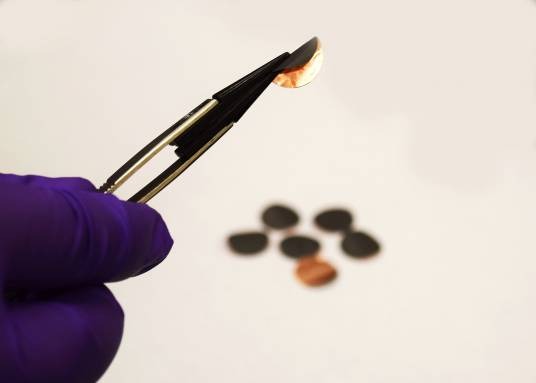Nanochains Could Increase Battery Runtime And Speed Charging
Researchers at Purdue University have announced a breakthrough that could have a significant impact on batteries of the future. The team says that the runtime for the battery in a phone or computer depends on how many lithium-ions can be stored in the negative electrode material inside the battery. When those ions are depleted, the battery is unable to deliver an electrical current.Materials with a higher lithium-ion storage capacity are typically too heavy or the wrong shape to replace graphite in modern batteries. Purdue University scientist and engineers have a new way that these materials could be structured into an electrode that could increase the run time of the battery, make it more stable, and shorten the charge time.
The breakthrough the researchers made is a new net-like structure called a "nanochain" of antimony. Antimony is a metalloid known to enhance lithium-ion charge capacity in batteries. The scientists compared nanochain electrode to graphite electrodes and found that when a coin cell battery with a nanochain electrode was charged for only 30 minutes, it had double the lithium-ion capacity for 100 charge-discharge cycles.

The team notes that some commercial batteries already use a carbon-metal composite that is similar to antimony metal negative electrodes. However, those materials tend to expand up to three times as it takes on lithium ions, causing a safety hazard as the battery charges.
The team was able to develop an antimony particle that used a nanochain shape that accommodated the required expansion. The team notes that the nanochain keeps lithium-ion capacity stable for at least 100 charge-discharge cycles. The team noted that there is "essentially no change" for cycle 1 to cycle 100. One scientist on the project noted they have no reason to think that further cycles would reduce the charge state further.
